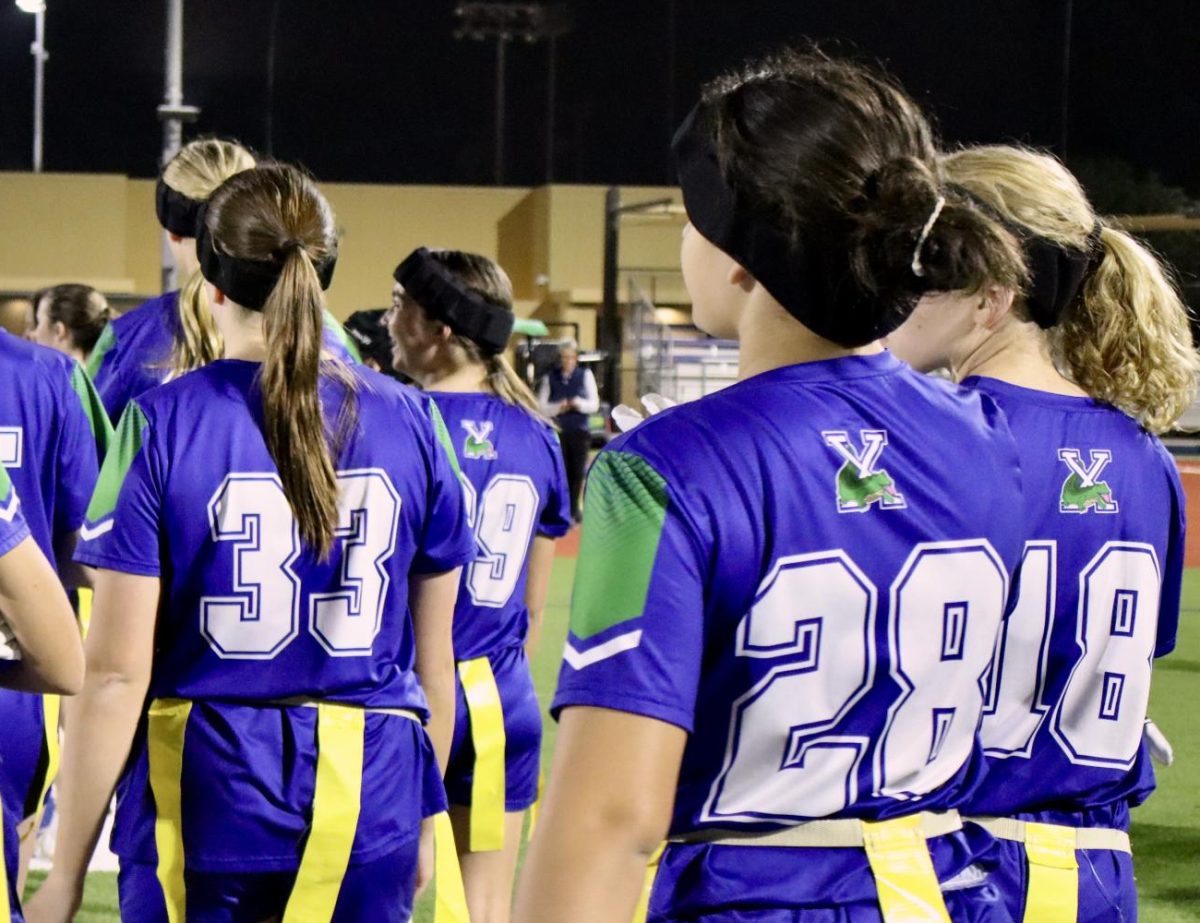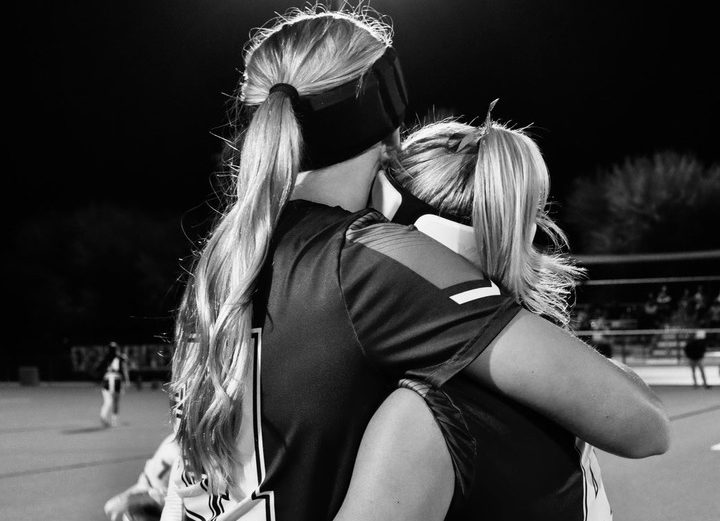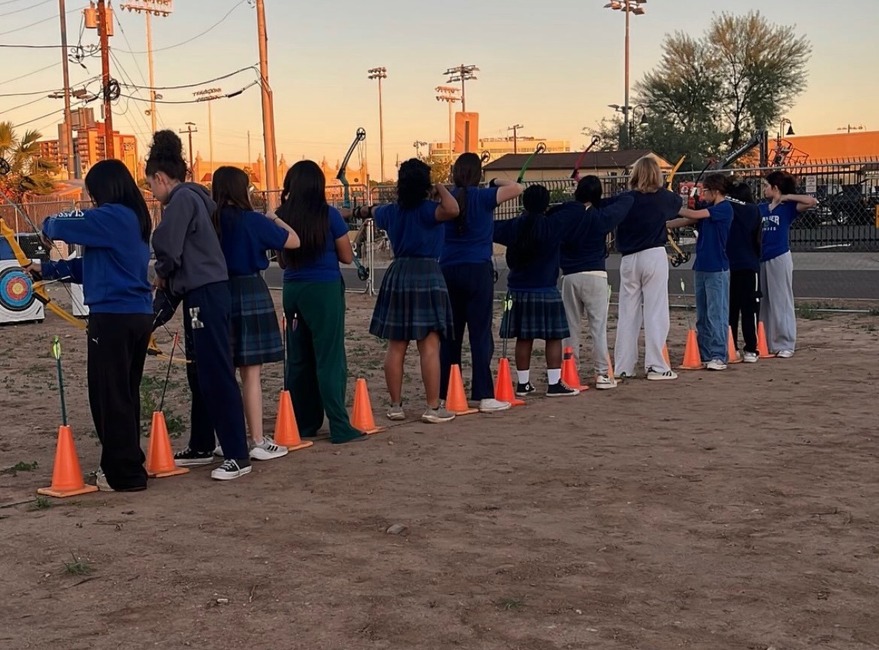On Sunday, October 20, rowers Kalani Hernandez ’25, Miranda Papez ’25, Norah Dentz ’25, Sydney Hertzberg ’25, and Sophia Robaina ’27 competed in the Head of the Charles Regatta in Boston, Massachusetts.
This decades-long Boston tradition is the world’s largest three-day rowing event. Founders of Cambridge Boat Club, D’Arcy MacMahon, Howard McIntyre and Jack Vincent, created the regatta on the advice of Harvard University instructor Ernest Arlett. Arlett proposed a “head of the river” race to be held on the Charles River. “Head” races are a class of regattas generally 4,702 meters or three miles in length.
Competitors range from collegiate teams, under-17 teams, club teams for ages up to 80, and para-teams. More than 12,000 athletes from around the world compete in 73 different race events. Other well-known competitors are Harvard, Yale, Brown, Dartmouth and Duke.
Head coach Geoffrey Stricklin said, “There has been a lot of mental and spiritual preparation over the last few months. It’s about helping Xavier rowers overcome obstacles, working on technique and encouraging them to do their best.”
Stricklin explains that Xavier was chosen through a “lottery system.” Xavier entered three possible boats: a coxswain double, a coxswain four and a coxswain quad. Only one was chosen, the “coxswain quad.” This is a sculling boat with four rowers who each handle two oars and a “coxswain” navigating the rowers.
The training season leading up to this event has come with its challenges. Beating the Arizona heat, 5 a.m. practices and core workouts have helped lead the team to being selected. The crew team has been practicing since the second week of August and all of this has helped them prepare for the race. The team practices on Tempe Town Lake four times a week for two and a half hours, including two morning sessions and one on Saturday.
Stricklin explains that a typical Sunday practice consists of the girls arriving at Tempe Town Lake at 5 a.m. They carry the boats from the boathouse to the lake, grab their oars and other gear and then “launch into the water.” They are given their boat assignments a few days before, so when they arrive they are set to focus on their techniques.
Selecting the five girls to compete in the “Head of Charles” was a meticulous process. Approximately seven weeks before the regatta, the coaches tested the 12 out of the 20 returning rowers who entered. The coaches raced the girls in a “single,” a singular boat where an individual holds two oars, which lasted over a series of 4 days. They narrowed the selection from 12 rowers to 6, and eventually to 4 (not including the coxswain).
Xavier was the only all-girls scholastic high school competing in the regatta from Arizona.
“Seeing all the other larger, taller people we were competing against was a little nerve-racking, but we were all locked in and ready to compete, ” said Robaina ‘27.
Before heading down to the water, the Gators did their pre-competition routine: a warm- up consisting of a few sets of cardio, stretching for 15-20 minutes and then a path to the water. Out on the water they did “pick drills,” warming up the arms and legs in the water with the oars. They rowed down the entire river as a warm-up 5K before starting the real one.
The day began with the Gators entering the water at 8:38 a.m. at the start line located at the Boston University DeWolfe Boathouse.
The girls, although used to rowing long distances, have never competed in a race with many sharp turns. Hernandez explains that to prepare for these turns along the Charles River she would practice “pieces underneath bridges” to help her with different angles. The “pieces” are used for stabilization.
“As a team, our technique was perfect, even if our place wasn’t where we wanted it to be. We were competing with girls who were twice our size and who have been rowing for much longer than we have,” Hernandez added. “I set the rhythm as a coxswain. I’m the head of the boat. I can see everyone and all the other boats in front of me and around me; because of this, I navigate the girls and tell them where to speed up, slow down or rear it back.”
Hernandez explains that to help her prepare for the race it is more mental than physical. She would study the rigorous course every day and study her race plan for the span of a month.
“Steering-wise, I would practice going hard on the rudder. Essentially I was turning in a square, in case we needed to move quickly,” she said.
Steering is an everyday part of being a coxswain. Coxswains are adjusting and steering. One has to negotiate wind, boats getting pushed around, and steering.
Despite not placing, Hernandez is proud of the hard work the girls and she have put into preparing for the competition. The Gators were competing with 54 other clubs. They beat 16 other teams and finished 38th.
“I was very proud of the girls and we did very well for what we had. I don’t think we could have trained any harder.”









